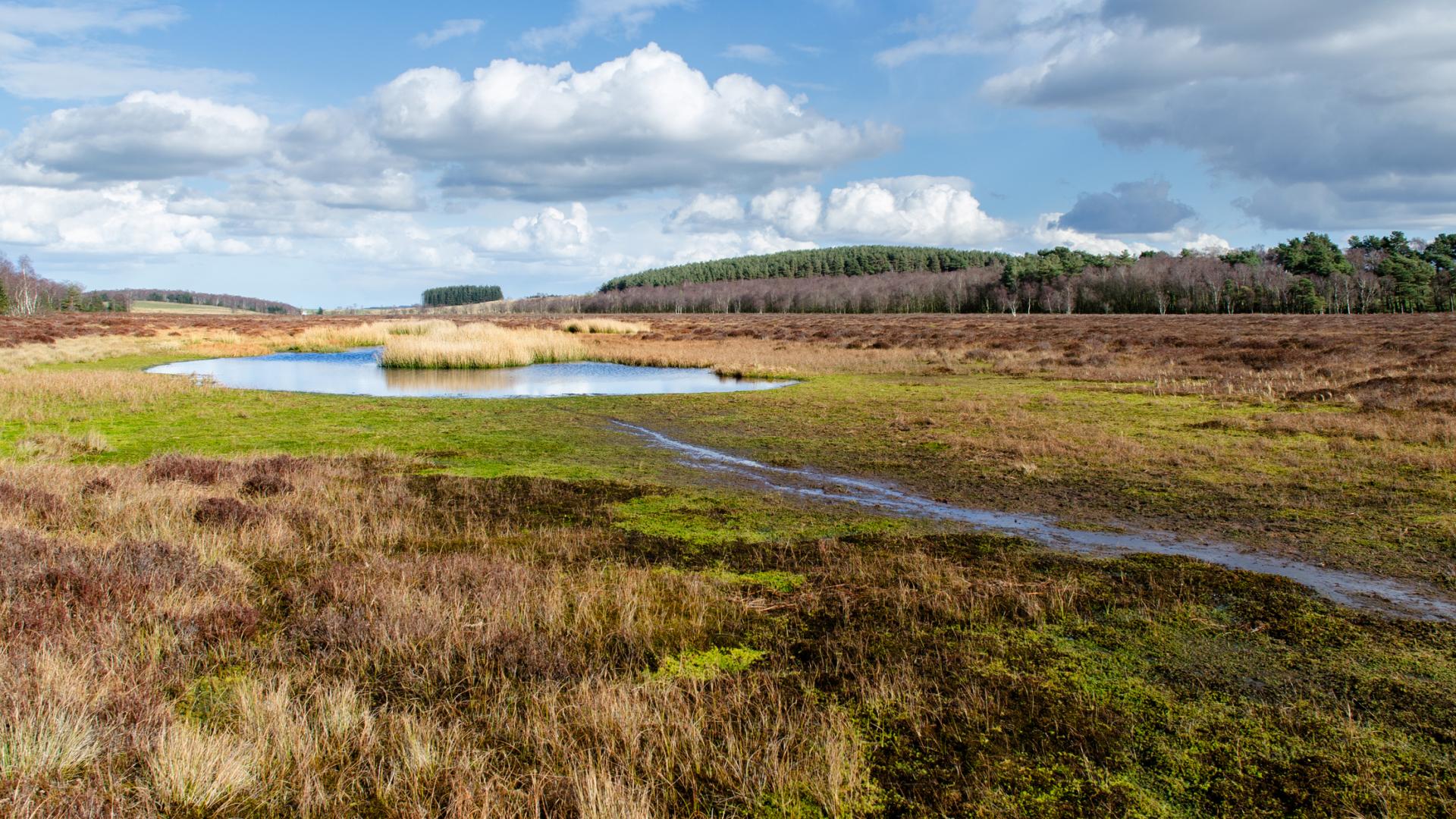Paul de Zylva20 May 2021
Ministers cannot hit their climate and other ambitions with cleaner fuels, whizz-bang innovations and hi-tech fixes alone. Those have a role (well some do; many do not) but the government’s world-leading climate and nature ambitions will be scuppered without healthy peatlands and trees in the nation’s toolkit.
Friends of the Earth’s campaign to double tree cover in the UK started in 2019, making it a relative sapling alongside our work on peat, which launched in 1993 with a call to end the sale of peat in garden centres. How time flies.
The UK was once blessed with extensive woodlands, yet we’ve felled the forests to become one of Europe’s least-wooded nations. Peatlands are regarded as our equivalent of rainforests, yet they’ve been destroyed and denuded so much that they are now leaking the very carbon we need to keep in the ground to avoid climate breakdown.
Multi-purpose solutions
Having many more of the right trees in the right place is a proven value-for-money natural solution to the nation’s ambitions to store carbon (in both trees and soils), as well as boosting wildlife, cutting flood risk and improving people’s local areas.
The government says it recognises the multi-purpose natural role of peat, which is far more effective when left alone. And not when it’s dug and bagged up, stacked high and sold as “multi-purpose” compost at rock bottom prices in garden centres, DIY stores and supermarkets.
Action to end all peat sales, restore peatlands and ban the burning of peat moorlands is long overdue. All three things are needed to make up for decades of mistreatment of the nation’s peatlands.
If ministers fail to act both in the short and long term, they can kiss goodbye to the potential of trees and peatlands playing their full part in storing carbon, supporting wildlife, improving water quality and holding back floodwaters.
Are the plans any good?
The government’s Peat and Trees Action Plans show ministers now get that properly protecting and restoring the nation’s peatlands and increasing tree cover are central to the UK’s nature, climate, flooding, and water- and soil-quality aims.
Overall, the peat plan is pretty good – let’s give it an entirely unscientific 8 out of 10. The trees plan is slightly underwhelming, but we’ll be generous and give it 6 out of 10. See why below.
Both plans are very brief, meaning they’re short on detail and focused on just the short term – until the end of the current parliament in 2024 to be precise.
The UK needs rapid action now to get on track with restoring nature, cutting carbon and more. In a way, then, it’s good that the plans have firm actions up to 2024. That’s a tangible timescale to grasp and to assess whether the plans are on track to be scaled up over the longer term.
But too often, long-term targets are set – usually with grand speeches and fanfares – and then forgotten about and missed. So, the plans’ short-term actions must be just the start of further sustained action.
Long-term plans matter because growing trees and restoring peatlands takes care and management over time, to make sure they’re doing what’s needed in climate and nature terms. Simply sticking trees in any patch of ground and walking away is probably asking for lots of dead trees.
Both action plans would score more if the government had laid out clear pathways between action now and how to follow through to 2050. Opportunities are coming up (see below) that could make the plans more than a flash in the pan.
Highlights
Now for the best bits of both plans:
Ending peat sales: The stand-out action is to end sales of peat in 2024, if not sooner. Ministers may be being generous, naive or both, in giving the foot-dragging peat and horticulture trade “four more years”. After all, in 2011 they gave it a decade to stop selling peat by 2020. That didn’t work but this time the plan is clear: time’s up, peat sales will end, no ifs, no buts. Watch for the public consultation this summer for the chance to tell minsters to keep their promise and, ideally, go faster with the phase out.
Restoring peatlands: Spending £50 million on restoring 35,000 hectares of degraded peatlands by 2025 is another bold, ambitious move. But note that 35,000 ha is just 10% of England’s peatlands, which underlines the need for credible, properly funded, long-term restoration of the rest.
Tree planting: Rates of tree planting will triple from 2,340 to 7,000 hectares a year by the end of the current parliament in 2024. This short-term burst will need to turn into the kind of planting rates in England that support the proven need to double the UK’s tree cover. Also see 7 below.
Banning the burn: A commitment to end the reckless practice of burning peat moorlands is welcome. But the plan lacks detail about how and when this will happen. Just as ministers allowed peat sales long after a previous 2020 deadline, the risk is that burning could be allowed to continue harming peatlands.
Levy on peat sales: We suggested to minsters they could put a levy on peat to “level up” the price difference with more costly peat-free composts. Set at the right level (pounds, not pence) a levy would send strong signals about the true cost of peat and help stimulate demand for truly peat-free composts. Who says ministers don’t listen?
The nation’s forests: A decade ago ministers tried to sell off England’s publicly owned forests. Ignoring our warnings of a “forests fiasco” they walked into a storm of public anger and were forced to climb down. A decade on, the Trees plan aims to expand England’s public forest estate. How times change.
Must do better
The low points of the action plans are:
Tree cover: the plan underwhelms because it simply repeats the existing 12% tree cover target. As we’ve shown, doubling tree cover is entirely feasible and England needs to play its part, not leave it to Scotland and Wales. The silver lining is that ministers will consult further on long-term targets – see below.
Quality of trees: The plan is unclear about how many trees would be mixed broadleaf species, such as oak and beech, and how many would be plantation forestry species, such as fast-growing spruce. Knowing the difference matters for all manner of nature and climate reasons, including soil quality, aims to support wildlife and timber production.
Peat funding: Restoring damaged peatlands is not a quick fix; it takes time and needs commitment over many years. That needs guarantees to fund restoration over the long term, not just short-term pots of cash. The peat plan is vague about future funding and peat’s tiny share of the ever-so-modest £640 million Nature for Climate Fund is not going to work.
Professional use of peat: The plan keeps 2030 as the date for commercial growers to end their use of peat. That’s too late. The sector’s foot-dragging over ending peat use is shown by its own data. Commercial use of peat to grow seedlings, shrubs and trees fell by just 1% cent in the 4 years to 2019. At that pace the industry would still be using peat many decades after 2030.
What next?
The peat plan is a bold step forward, but things are not in the bag yet. The trees plan is less bold.
Both plans need a lot more detail and work to be credible and fit for purpose, so look out for:
Consultations to come – there will be a summer public consultation on phasing out peat sales, and a winter consultation on longer-term tree targets. People need to tell minsters to stand firm on ending peat sales and phase them out faster. They also need to set ambitious tree targets beyond 2024-25 that are commensurate with the action needed on climate and nature.
All eyes on net zero – watch for the government’s all-important Net Zero Strategy. This will be massive, because it will pull a lot of aims together and set the course for the UK to meet its legal and international obligations.
Landmark Act – it’s also vital to get the government’s landmark Environment Bill right before it becomes an Act of Parliament. The Bill must include the right targets for peat restoration, tree planting and woodland creation.
Let’s work together for better peat protection and more trees, please…



